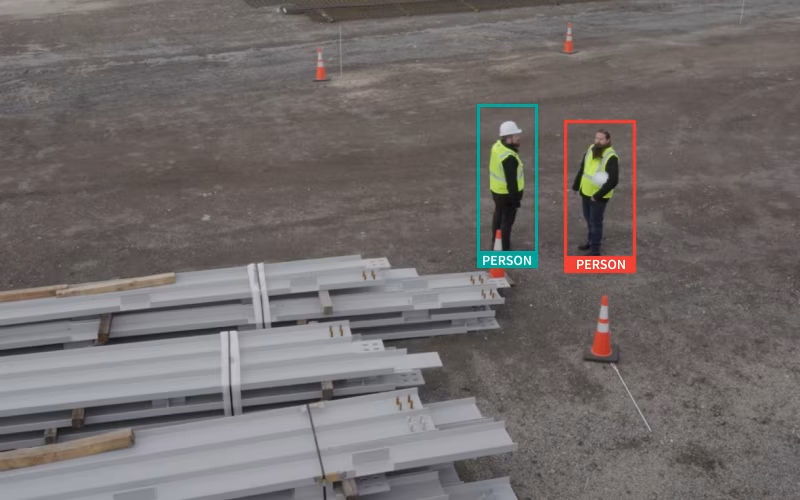How Are Security Cameras Powered?

How do you power a camera if it isn't plugged into an electrical outlet?
My family loves what we call “good ice.” To be good ice, it has to be small, pebble ice that can be easily chewed. It can’t be cubed or crescent shaped. Nor can it be crushed. It has to be the pebble kind. We spent years buying bags of ice from Sonic and treasuring it in our Diet Cokes or choosing which fast food we were going order based on the type of ice they had in their fountain drinks.
My parents have a pebble ice maker in their kitchen. It’s my mom’s prized possession. In fact, it is so highly valued that when the power goes out on their lane, the ice maker is one of the few things connected to the backup generator. (Only the important things are connected to the generator—some lights, the fridge, the furnace, and the essential ice maker.)
Many businesses have their ice maker—things that they cannot afford to have lose power or fail. For some it is their servers for others it may be a piece of equipment. For example, department stores typically have backup power to their lights, payment stations, and security cameras. Gas stations will have it wired to their pumps, lights, payment stations, and cameras. Even in the food industry they use backup power to make sure their refrigerators, kitchen equipment, and cash registers have power so they can preserve their stores while serving those already in their restaurant if the power grid fails.
One thing that is essential to ensure it has power is the security system. However, this is even easier now that security systems are wireless. Now instead of having to rely on the power grid for the entire building, wireless systems can have backup power sources built in.
There are four main alternatives for powering wireless security cameras:
- Batteries
- Generators
- Fuel cell technology
- Solar panels
Batteries
Batteries are convenient power sources. However, if you use cameras that run on small, household batteries they drain fast, so you have to replace them frequently. Furthermore, these cameras are not as durable, typically only lasting a few years before they have to be replaced.
Some surveillance systems, like LVT, use car batteries as their power source. Obviously, car batteries do last longer than a 9 volt or AA, but they are a lot bigger. This can hinder some surveillance systems because you have to house the battery somewhere. You can’t put the battery on the ground in the open with wires running up to the camera. That makes it too easy to cut the wires.
Generators
Generators are dependable but they too require frequent check-ins since they rely on fuel. Furthermore, they are loud and not as efficient as other power options. LVT has used traditional generators in our trailers. However, this is not the ideal power source because of its necessary maintenance. What’s the point of having a remote security unit that you can access remotely if you are making frequent refueling stops? Another disadvantage of traditional generators is they don’t operate well in extreme cold. Since security and surveillance systems are still needed in cold climates, this can be a huge detriment.
Fuel Cell Technology
Unlike batteries or generators, fuel cell technology, also known as a methanol generator, requires much less maintenance and is still extremely reliable. In fact, fuel cells are quieter, more efficient, and consume less fuel than a traditional generator.
Fuel cell technology runs on methanol and are so quiet that you can’t even tell it is on. These are ideal for remote surveillance cameras because they only need to be refueled every few months. Furthermore, they can operate in the extreme cold without a problem.
Solar
Solar surveillance cameras have the advantage of an (almost) unlimited power source. Unless you live at either the top or the bottom of the world, you will get reliable sunlight. However, on their own, solar panels struggle to consistently power cameras because there will always be some hours of darkness. But when they are combined to a battery system, solar panels are extremely reliable to power cameras.
The biggest drawback to solar surveillance cameras is the fact the panel will always have to be exposed. This opens the door to vandals, damage related to the weather, and more. However, we have found that the most common problem with the exposed panels is they get covered with snow or days of clouds block the sunlight.
LVT
Having consistent, reliable power is necessary for any security camera system. It is one of the ice makers of the world—it should always have power so your property is never unprotected.
Currently, LVT uses a combination of these fuel sources. Our trailers are equipped with car batteries and solar panels, and, where necessary, with generators and fuel cell technology. By combining different fuel sources, we can ensure that our systems are equipped to truly go anywhere. Furthermore, except for the solar panel, all of our power sources are enclosed within the trailer. This not only protects the power sources from any vandalism or natural threats, but also makes the system compact and easy to move. Find out more by requesting your free demo.



